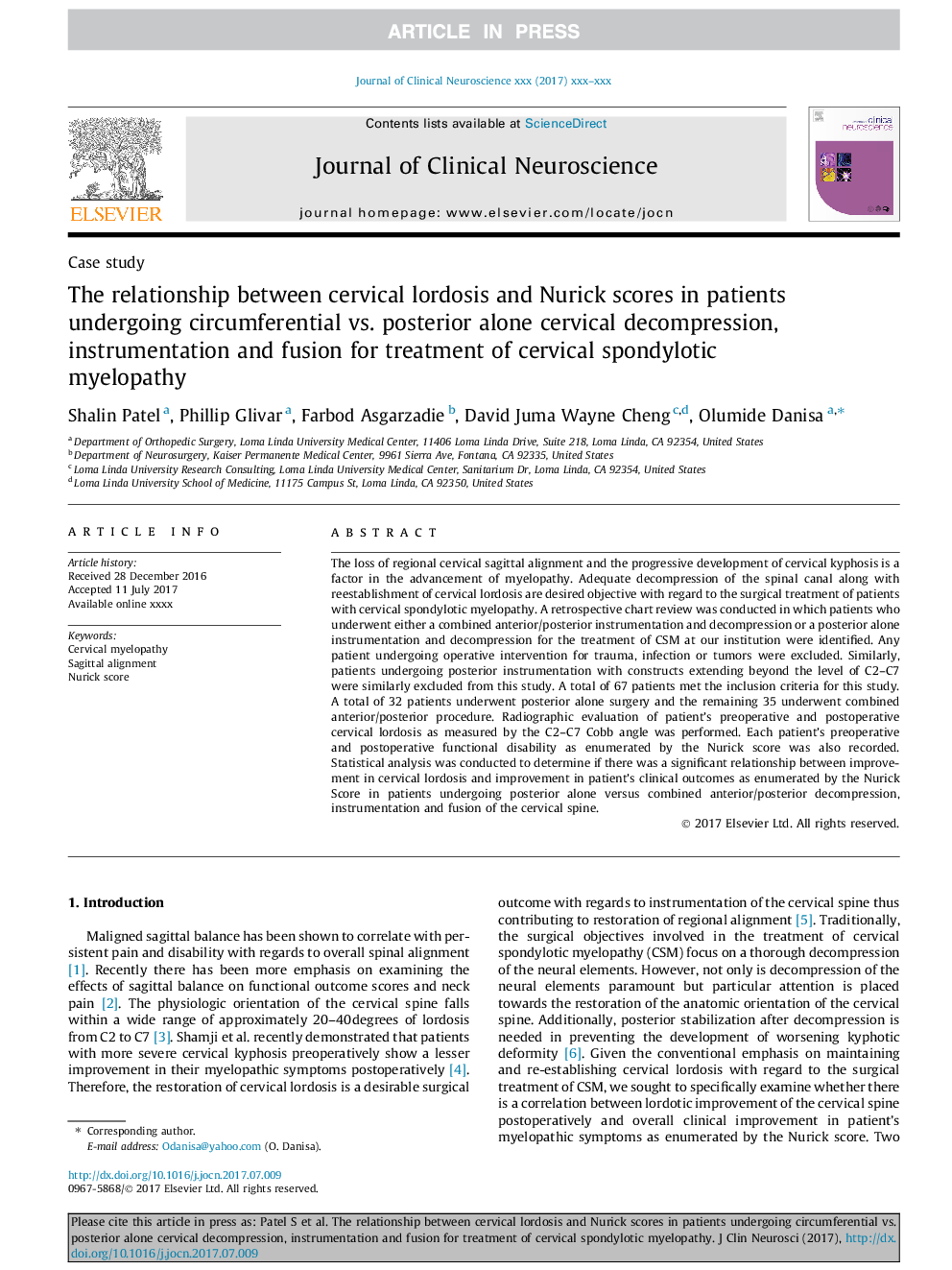| Article ID | Journal | Published Year | Pages | File Type |
|---|---|---|---|---|
| 8685568 | Journal of Clinical Neuroscience | 2017 | 4 Pages |
Abstract
The loss of regional cervical sagittal alignment and the progressive development of cervical kyphosis is a factor in the advancement of myelopathy. Adequate decompression of the spinal canal along with reestablishment of cervical lordosis are desired objective with regard to the surgical treatment of patients with cervical spondylotic myelopathy. A retrospective chart review was conducted in which patients who underwent either a combined anterior/posterior instrumentation and decompression or a posterior alone instrumentation and decompression for the treatment of CSM at our institution were identified. Any patient undergoing operative intervention for trauma, infection or tumors were excluded. Similarly, patients undergoing posterior instrumentation with constructs extending beyond the level of C2-C7 were similarly excluded from this study. A total of 67 patients met the inclusion criteria for this study. A total of 32 patients underwent posterior alone surgery and the remaining 35 underwent combined anterior/posterior procedure. Radiographic evaluation of patient's preoperative and postoperative cervical lordosis as measured by the C2-C7 Cobb angle was performed. Each patient's preoperative and postoperative functional disability as enumerated by the Nurick score was also recorded. Statistical analysis was conducted to determine if there was a significant relationship between improvement in cervical lordosis and improvement in patient's clinical outcomes as enumerated by the Nurick Score in patients undergoing posterior alone versus combined anterior/posterior decompression, instrumentation and fusion of the cervical spine.
Related Topics
Life Sciences
Neuroscience
Neurology
Authors
Shalin Patel, Phillip Glivar, Farbod Asgarzadie, David Juma Wayne Cheng, Olumide Danisa,
